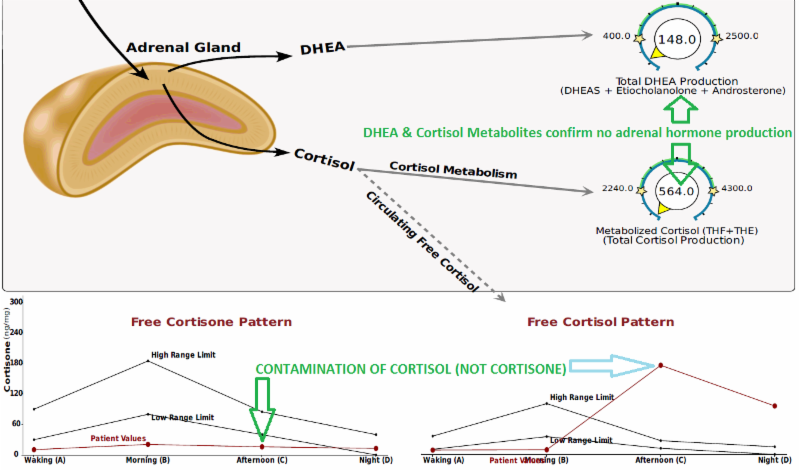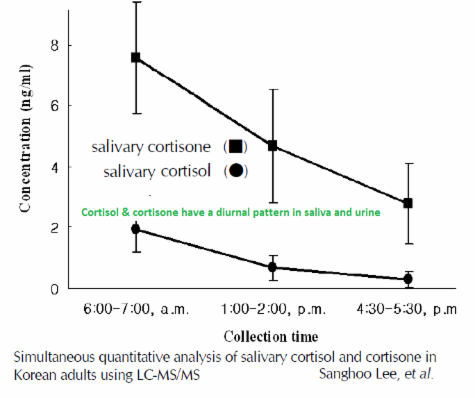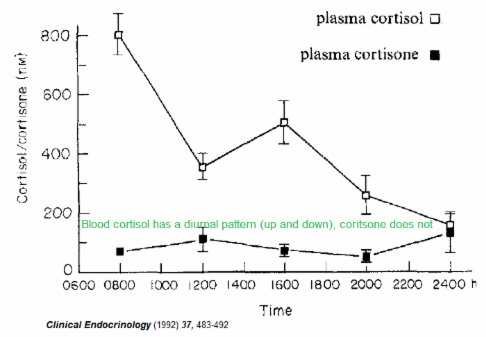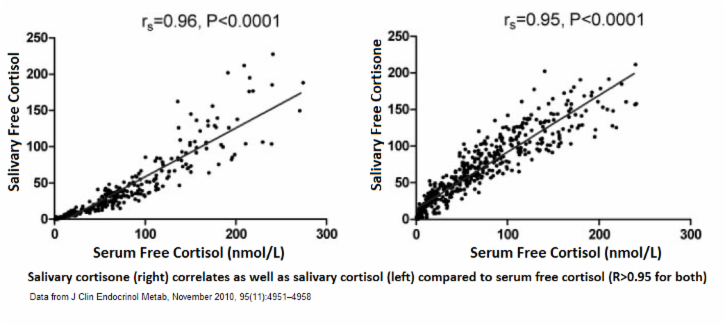The simplified DUTCH Report has arrived, and current DUTCH Providers are eligible for up to 5 DUTCH Complete or DUTCH Plus test kits for 50% off. Learn more and claim this offer!
Why does DUTCH include cortisone and not just cortisol?
Mark Newman, MS
Why does DUTCH include cortisone and not just cortisol?
by Mark Newman, MS
DUTCH testing includes free cortisol throughout the day (just like saliva testing). This is a unique feature of our DUTCH testing model. Unlike saliva testing, we also include free cortisone in these same samples…WHY?
I get this question a lot, and the answer is not entirely simple. I’ve made a video to walk you through this, and I would encourage you to watch it.
Here is the same approximate information in bullet points. Study data supporting some of this information is at the bottom, and you may find it interesting to skip down and view that, even if you don’t read all of this post in detail.
What is cortisone?
- Cortisone is the inactive form of cortisol (to paraphrase the below reference “cortisone shows minimal biological activity per se, reflecting negligible affinity for the glucocorticoid and aldosterone receptors”)
- Reference – Biochimica et Biophysica Acta 1802 (2010) 1178-1187
- The kidney, colon and saliva gland have lots of activity for changing cortisol to cortisone (active → inactive) to keep cortisol off the aldosterone receptor
- Cortisone is converted back in the liver, fat, etc. (inactive → active)
Why test cortisone?
- It helps to confirm the diurnal pattern of cortisol
- It does NOT necessarily tell you if cortisol or cortisone is preferred overall (look to the metabolites for this)
- It helps you identify if there is potential cortisol (hydrocortisone) contamination
Why do we test cortisol metabolites and cortisone metabolites?
- Free cortisol/cortisone only represent about 1-3% of the total and the metabolites represent most of what has been produced
- Free cortisol and cortisone are heavily influenced by local (kidney) conversion of cortisol to cortisone before they both spill into the urine (this is true in saliva as well)
- The ratio of cortisol metabolites and cortisone metabolites best represent the overall dominance of either active cortisol or inactive cortisone (these can’t be tested in saliva)
An odd truth you might find interesting – Cortisone has no significant diurnal pattern in blood, but it does in urine and saliva!…say what???
- What you see in urine (or saliva) as free cortisone actually reflects free cortisol that enters the kidney and is converted to cortisone locally before excretion. This makes free cortisone a secondary, confirmatory marker for the up-and-down pattern of free cortisol [see graphs at the bottom for data on this].
How do you practically use the pattern of free cortisone?
- Free cortisol is of primary importance, but the pattern of cortisone helps to shape what free cortisol implies about systemic free cortisol.
- When free cortisol is high and cortisone is high also, it confirms the elevation
- When free cortisol is high and cortisone is NOT, free cortisol levels may not be quite as high as the cortisol levels themselves imply…OR free cortisol could be elevated due to a metabolic preference (away from cortisone) more so than increased production
- The relationship between free cortisol and free cortisone tells us some information about how sharply the kidney is deactivating cortisol
- But it doesn’t tell us SYSTEMICALLY which one is predominating (use the ratio of the metabolites for that)
Here is a somewhat obscure (but important) use for measuring cortisone. This patient makes no adrenal hormones (cortisol, DHEA) but free cortisol is super high right after she uses a hydrocortisone (cortisol) cream. If levels of free cortisol really went way up (as implied by results), cortisone will go up too. In this case, cortisone does not because the increased cortisol is due to contamination and should be ignored.

Below you will find some interesting data to support the above discussion. if you’re like me, you still find this all a bit confusing. You’re not alone. The entirety of the cortisol picture is complex. We want to gather as much information as we can to make the best decisions for patients. If you have questions on this topic, let me know. When it comes to this topic, I’m really still learning. We’re all on a journey of learning together. I hope this information helps you along the way. Cheers!
There is a significant diurnal pattern to cortisol and cortisone in saliva and urine, but not for cortisone in blood.


Free cortisol in blood correlates well with salivary cortisol as well as salivary cortisone.

TAGS
Cortisol Metabolism
Cortisol
HPA Axis
Laboratory Testing: In-Depth Look at DUTCH Urine Testing
Women's Health
Men's Health